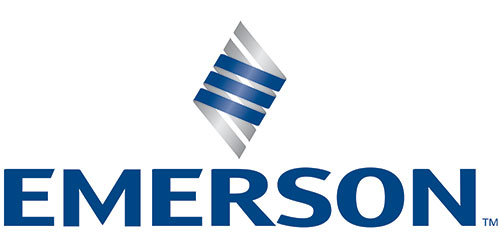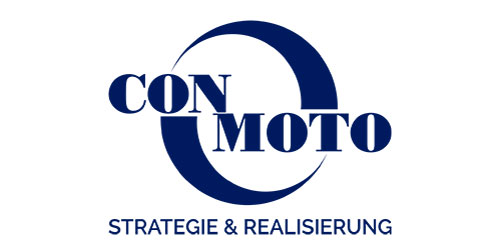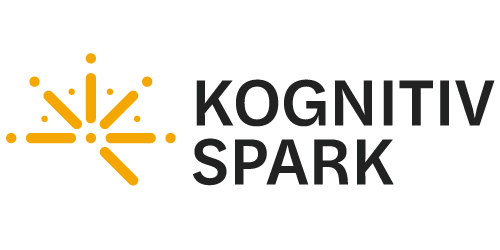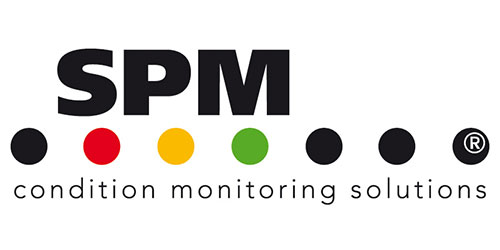Agenda
DAY 1
08:00 – 08:50
REGISTRATION
08:55 – 09:00
CHAIRPERSON’S OPENING REMARKS
09:00 - 09:30
HERE’S THE SOLUTION! WHAT’S THE PROBLEM?
- Technological advancements from IOT, Wearables, Machine Learning, and Artificial Intelligence bring exciting new opportunities
- Before investing in these technological advancements, the maintenance problem being solved must be clarified
- The technological choices need matching with the maintenance problem, with clear and measurable benefits
- A digital maintenance strategy requires careful choices – don’t do everything, just because you can
Rachel Cooke, Global Director, Reliability Maintenance Engineering, Amazon

09:30 - 10:00
Maintenance in a vertical integrated (medical device) company
- Applied Medical, its vertically integrated culture and what it means for the maintenance department
- Applied Medical Automation team
- Maintaining equipment in “as new condition” in highly regulated environment
- Maintenance technicians, recruitment, and commitment in current market
Johannes de Boer, Director of maintenance and Automation, Applied Medical
![]()
10:00 - 10:30
"TinyML and Digital Twins: Innovating Industrial Maintenance at the University of Applied Sciences Amsterdam"
- Exploring the Role of TinyML in Rapid, Cost-effective Industrial Experimentation
- Synergizing Physical and Digital Twins: A Case Study on Cooling Installations
- Utilizing Large Language Models to Enhance Proactive Industrial Maintenance
- Motion Amplification: A Research Insight into Its Practical Applications
- Collaborative Pathways: Engaging with Industry via Demonstration, Partnership, and Empowerment
- Case Studies and Practical Implications of Advanced AI in Industrial Maintenance
Jurjen r. Helmus, Manager Smart Asset Management Lab, Amsterdam University of Applied Sciences
10:35 - 11:25
COFFEE BREAK
11:30 - 12:00
MODERN AIR COMPRESSOR TECHNOLOGY ENHANCING MANUFACTURING RELIABLITY, COST REDUCTION AND SUSTAINABILITY
- Role of air compressors in modern production
- Case studies: From Sustainability KPIs to actual results
- How high-speed technology and active magnetic bearings shifts service orientated air compressor markets to more sustainable direction
- Suppliers as part of reliability network in compressed air production
- Utilization of compressor system data for preventative actions
Timo Sihvo, Sales Manager, Nordics, Tamturbo
![]()
12:00 - 12:30
How Digital Transformation helps to move from Manual to Automated Condition Monitoring
- How to move from traditional monitoring techniques to new automated monitoring
- How technology could help to optimize your condition monitoring personnel to be more efficient
- Being focussed on assets with degraded health conditions
- Built-in prescriptive and edge analytics can enhance efficiencies by automating the data collection and analysis, providing measured benefits to users with less experience
- Root cause analysis using Condition Monitoring tools
José Ignacio García, Sales Manager Europe – MHM Online | Reliability Solutions, Emerson

12:30 - 13:00
The Fundamental Elements Required to Get Real Benefits from Industry 4.0 Technologies
- Industry 4.0 is promising to maximize equipment production capacity by using AI predictive analytics to detect in advance potential failures in order to perform the corrections before equipment fails
- More than 50% of asset intensive companies operate with unplanned maintenance work over 50%
- ‘Will you be able to perform these corrections on time, when you are constantly flooded with urgent reactive work?
- You must realize that you first need to put the house in order and get out of the relentless reactive mode to be able to achieve real Industry 4.0 benefits
- Efficient Scheduling is at the forefront of the efforts to execute maintenance work in a planned mode
- The 4.0 digital technology must be designed specifically to support the process and ensure that the people are playing their role flawlessly to get real value from it
Jean Charbonneau, President/CEO, iVisual Maintenance Solutions
![]()
PLANNED INVESTMENT AREAS
- Predictive Maintenance PdM 4.0
- Remote Management
- Non-intrusive Inspection
- Lubrication Systems
- Augmented & Virtual Reality (AR & VR)
- Artificial Intelligence
- Cybersecurity
- MES / Shop-floor Digitization
- Workforce Training and Development
- M2M Communication
- Unified Communications / Wireless Connectivity
- Cloud, Edge & IoT Data Management
- Asset Lifecycle Management
- Energy Efficiency
- Machine & Deep Learning
- Wearable Digital Technologies
- Predictive Analytics
- Asset Performance Management (APM 4.0)
- Computerized Maintenance Management System (CMMS)
- Reliability Engineering
- Asset Optimization
- Sensors
- Data Analytics
- Condition Monitoring
- Fault detection, isolation, and recovery (FDIR)
13:05 - 13:55
LUNCH
14:00 - 14:30
Challenges in the operation of ground mounted Solar PV
- Intro
- Challenges
- A glance at OPEX
- Impressions from PV operations
- Would you hire an professional O&M provider?
“Does my PV system need operational management?”, Understanding the power plant main components, Main tasks for an O&M provider
Monitoring, KPI´s and preventive data analytics, Preventive maintenance and on hold service, Work save – under load?, Contractual guarantees – implementing standard calculation methods, Spare Parts Management, Curtailment management, Handling of new technologies (such as 1.500 V systems), Revamping / Repowering, business case renewal
Example 20 MWp solar farm, Potentials for cost optimisation
Alexander Pulz, Head of Operation and Maintenance, PFALZSOLAR GmbH

14:30 – 15:00
Enabling technologies for maintenance
- Predictive maintenance in UPMASS project
- Augmented reality in 5G-INDUCE project
- Voice Worker assistance in K-HUB project
- How we are going to work in the future
Stefano Di Paolo, Senior Analyst, Business Process, Whirlpool Management EMEA S.r.

15:00 – 15:30
Manufacturing process optimization with Explainable Artificial Intelligence
- CNH Industrial business context with focus on manufacturing process before the application of Explainable Artificial Intelligence (XAI);
- Use case description, challenges, and motivation behind the needs of XAI application in manufacturing plant;
- Users’ stories on AI explainability: « what does the user want to know?»;
- Dashboard for XAI application within the XMANAI European project
- Conclusion considering the added value to business improving maintenance with XAI support
Sara Cavallaro, Ergonomics Design Analysis Engineer, CNH Industrial

15:35 - 16:25
COFFEE BREAK
16:30 - 17:00
Machine Monitoring – Easy in every way
- Unplanned downtimes cause high costs and waste energy
- Many predictive maintenance solutions are too expensive and complicated
- Optimal lubrication and transparency of machine health avoid unplanned downtimes
- The simplicity of a solution is key for widespread distribution and use
Thomas Schmitz, Senior Expert Sales Consultant, Schaeffler Lifetime Solutions
![]()
17:00 - 17:30
CONTRIBUTION OF DIGITALIZATION AND ARTIFICIAL INTELLIGENCE TO THE VALUE PROPOSITION OF MAINTENANCE
- Maintenance as a value driver
- Role of digital tools in maintenance
- Example for process improvement using mobile apps
- Examples for applications of text mining and AI
Dr.-Ing. Christian Frenzel, Partner, ConMoto

PLANNED INVESTMENT AREAS
- Predictive Maintenance PdM 4.0
- Remote Management
- Non-intrusive Inspection
- Lubrication Systems
- Augmented & Virtual Reality (AR & VR)
- Artificial Intelligence
- Cybersecurity
- MES / Shop-floor Digitization
- Workforce Training and Development
- M2M Communication
- Unified Communications / Wireless Connectivity
- Cloud, Edge & IoT Data Management
- Asset Lifecycle Management
- Energy Efficiency
- Machine & Deep Learning
- Wearable Digital Technologies
- Predictive Analytics
- Asset Performance Management (APM 4.0)
- Computerized Maintenance Management System (CMMS)
- Reliability Engineering
- Asset Optimization
- Sensors
- Data Analytics
- Condition Monitoring
- Fault detection, isolation, and recovery (FDIR)
17:30 – 18:00
PANEL DEBATE: DESIGN THE PERFECT WORKFORCE OF THE FUTURE: ARTIFICIAL INTELLIGENCE (AI) TECHNOLOGY IS RAPIDLY CHANGING THE MODERN WORKFORCE BY CREATING NEW SKILLS AND ERADICATING OTHERS. HOW DO WE READY OUR ENGINEERS AND TECHNICIANS FOR THE CHANGES TO COME
- What is AI’s impact on the skills of the future?
- Having a central platform to understand your workforce and how it compares to the market
- Empowering the technicians and engineers and creating organizational change
- Make informed decisions about where to build and grow talent to drive business growth in real-time
- Skills are the lifeblood of our organizations, how do you know what you’re working with today and what you’ll need to plan for tomorrow?
- How to deliver learning for effective skills development
- What are the must-haves for people-first organizations
Moderator:
Jean Charbonneau, President/CEO, iVisual Maintenance Solutions
Panel members:
Erik Grakist, Head of Maintenance, Reliability Engineering, Mars
Rachel Cooke, Global Director, Reliability Maintenance Engineering, Amazon EU Sarl
Josef Kriegmair, Representative Industrialization Production Systems, MTU Aero Engines AG
Kent Eriksson, Global Director Digitalization of Manufacturing, Autoliv
18:05 – 19:00
DRINKS RECEPTION
DAY 2
08:55 – 09:00
CHAIRPERSON’S OPENING REMARKS
09:00 – 09:30
Operational Excellence and the Digital Renaissance of Maintenance and Reliability
- Digitalization Demystified: The true essence of information flows
- Cost-Effective Digitalization: Ensuring impactful business outcomes
- Digital Pulse at Autoliv: Present strategies and implementations
- Envisioning 2030: Anticipating maintenance and reliability needs
- Beyond Technology: Emphasizing change management from today to tomorrow. Transfer Knowledge. Drive Innovation
Kent Eriksson, Global Director Digitalization of Manufacturing, Autoliv
![]()
09:30 – 10:00
Manufacturing as an Enabler for Maintenance and Reliability
- Lifecycle approach as a way to reliable manufacturing equipment
- Risk exposure as a driver for maintenance levels
- Cooperation between manufacturing and maintenance as a foundation
- Data as an enabler for new ways of maintenance of machines
- Manufacturing equipment asks for maintenance
Josef Kriegmair, Representative Industrialization Production Systems, MTU Aero Engines AG

10:00 - 10:30
How data analytics become a lever for production, maintenance, energy and CSR efficiency.
- Where and how to collect data
- Extracting more value from data
- Digital transformation of Efficiency, Maintenance and Energy management
- Measuring the impact on CSR performance
Didier Lamy, Marketing Director Decide4Action FR, Decide4Action

10:35 - 11:25
COFFEE BREAK
11:30 – 12:00
Seamless Operations: Empowering Efficiency with Mixed Reality
- Exploring Mixed Reality’s Evolution: Delve into the evolution of mixed reality, tracing its historical journey
- Unlocking Business Value with Mixed Reality (MR): Discover the tangible benefits of integrating mixed reality into your operations and how it can elevate your company’s performance
- Success Stories in Action: Explore real-world client case studies showcasing the seamless integration and return on investment (ROI) achieved through our mixed reality software
- Experience RemoteSpark™ Live: Engage in a dynamic, hands-on demonstration of our cutting-edge mixed reality software, RemoteSpark™, through an interactive live session
Duncan McSporran, Co-Founder, COO, and VP of Defence and Aerospace, Kognitiv Spark

12:00 – 12:30
AI: how to get from artificial to tangible value
- Machine Learning in the Industrial Context
- From Raw Data to Rich Insights: how to create a 360-degree view of your processes
- Combining different elements of intelligence for Anomaly detection & Predictive Maintenance
- How analytics can identify bottlenecks, streamline operations, and maximize resource utilization, leading to substantial cost savings
Joan van de Wetering, General Manager, TrendMiner
![]()
12:30 – 13:00
The role and opportunities of condition-based maintenance in the digital transformation
- No all-purpose approach: The key to maximizing returns from main¬tenance and production is choosing the proper monitoring solution and maintenance level for each asset.
- Demonstrated results for key metrics: With global experience providing solutions that help companies capture and leverage supe¬rior-quality condition monitoring data to drive business growth.
- Solutions for Industry 4.0: SPM’s cutting-edge online, handheld, and wireless condition monitoring technology with world-class meas¬urement performance ties seamlessly into IIoT platforms.
- Deep technical expertise and extensive application knowledge enable us to deliver solutions that give companies a technical, economic, and competitive advantage
Rick Verbij, Managing Director, SPM Instrument B.V.

PLANNED INVESTMENT AREAS
- Predictive Maintenance PdM 4.0
- Remote Management
- Non-intrusive Inspection
- Lubrication Systems
- Augmented & Virtual Reality (AR & VR)
- Artificial Intelligence
- Cybersecurity
- MES / Shop-floor Digitization
- Workforce Training and Development
- M2M Communication
- Unified Communications / Wireless Connectivity
- Cloud, Edge & IoT Data Management
- Asset Lifecycle Management
- Energy Efficiency
- Machine & Deep Learning
- Wearable Digital Technologies
- Predictive Analytics
- Asset Performance Management (APM 4.0)
- Computerized Maintenance Management System (CMMS)
- Reliability Engineering
- Asset Optimization
- Sensors
- Data Analytics
- Condition Monitoring
- Fault detection, isolation, and recovery (FDIR)
13:05 - 13:55
LUNCH
14:00 – 14:30
Terumo’s journey towards operational excellence
- Introduction Terumo Europe
- Highlights of Terumo’s journey – strategic goals
- Technology should support all aspects of the strategy
- Terumo’s cultural focus to support strategy
- Recognition supports the drive to move forward as a team
Bart Depuydt, Plant Maintenance Engineering Manager, Terumo Europe N.V.

14:30 - 15:00
Physics-based, data-centric and hybrid predictive maintenance strategies
- Strategies for developing prognostics and health management solutions when historical data is limited.
- Need for domain-specific data processing strategies and overcoming the black-box nature of existing solutions.
- Creation of data-centric explainable machine learning models to enhance prognostics and health management.
- Development of hybrid models combining physics-based and data-centric approaches to improve prediction accuracy and reduce uncertainty.
Pradeep Kundu, Assistant Professor, KU Leuven

